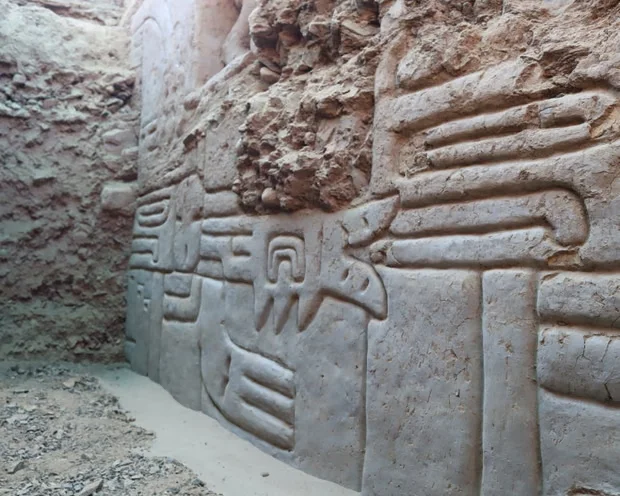
Archaeologists Uncover 4,000-Year-Old 3D Mural in Peru, Offering New Insights into Early Civilisations | Travel News
Archaeologists in Peru have unearthed a multicoloured, three-dimensional mural that could date back 4,000 years, marking a groundbreaking discovery that is reshaping understanding of the earliest civilisations in the Americas.
The mural, measuring three by six meters, prominently features a large bird of prey with outstretched wings, its head decorated with three-dimensional diamond patterns that link the south and north sides of the artwork. High-relief friezes and vibrant pigments in blue, yellow, red, and black adorn the wall.
The sophisticated imagery offers new perspectives on the beliefs and social structures of Peru’s formative period (2000–1000 BC). Pre-Hispanic Peru is considered a cradle of civilisation in the Americas, with over 100,000 archaeological sites, including globally renowned locations such as Machu Picchu and the Nazca Lines.

Ana Cecilia Mauricio, lead archaeologist at the Huaca Yolanda excavation in the Tanguche Valley, La Libertad region, explained that the mural highlights “the emergence of social hierarchy as societies became more complex and transitioned into civilisations.”
The double-sided mural was part of a temple courtyard’s interior decoration. Its 3D motifs—including stylised fish, nets, mythological creatures, and stars—reveal fascinating insights into the cosmology of early coastal civilisations.
“These people relied on agriculture and the sea, yet they already exhibited early signs of social hierarchy,” Mauricio said, speaking from the dig site.
The most influential individuals were likely shamans or priests and priestesses, she added, possessing extensive knowledge of medicinal plants and astronomy, enabling them to predict weather patterns by observing the stars and sun. “They were, in many ways, both scientists and spiritual leaders,” Mauricio explained.

One carving depicts three humanoid figures transforming into a bird, possibly representing a shamanic rite of passage induced by psychoactive substances like the San Pedro cactus.
The Huaca Yolanda site likely predates Chavín de Huántar, another key ceremonial site from the formative period. Both locations reveal early civilisational development, including ceremonial use of hallucinogens documented at Chavín de Huántar.
However, the site faces threats from agriculture, urban expansion, and looting, which has already damaged nearby ruins. Despite ongoing research since 2012, the site still lacks full protection from Peru’s cultural authorities.
“Past societies maintained a close relationship with their environment and climate, which can teach us valuable lessons today,” Mauricio noted, referencing how early civilisations coped with the El Niño phenomenon—a challenge that continues to affect modern Peru.
Check Our Suggested Tours:
- Peru By Belmond Tour
- Family Adventure Tour
- The Soul of Two Worlds: A Grand Amazon & Andes Expedition 14d/13n
- Honeymoon In Peru - Peru Honeymoon Packages
- From the Heart of the Jungle to the Sacred Mountain: A Luxury Expedition Through the Amazon & Ausangate 16d/15n
- Following the Path to the Sacred Sun Gate
